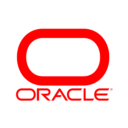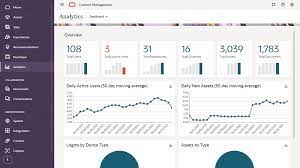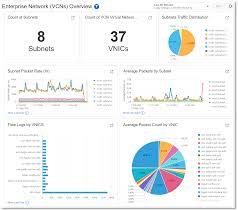Zoho Analytics, a robust business intelligence and analytics platform, plays a pivotal role in empowering businesses to unlock the full potential of their data. With its intuitive interface, powerful features, and comprehensive capabilities, Zoho Analytics enables users to analyze data, visualize trends, generate interactive reports, and derive actionable insights, ultimately contributing to business success. This article is designed to provide a deep dive into the realm of Zoho Analytics, exploring its key features, benefits, pricing options, use cases, and integration capabilities.

- Data Integration: Oracle Analytics Cloud seamlessly integrates with various data sources, including databases, data warehouses, cloud-based platforms, and enterprise applications. This enables users to consolidate data from multiple sources, ensuring a unified view for analysis.
- Data Visualization: Oracle Analytics Cloud offers a rich library of data visualisation options, allowing users to create compelling visual representations of their data. The platform supports interactive dashboards, dynamic charts, geospatial visualisations, and more, empowering users to communicate insights effectively.
- Self-Service Analytics: Oracle Analytics Cloud emphasises self-service analytics, enabling business users to explore and analyse data without heavy reliance on IT departments. The intuitive interface and drag-and-drop functionality make it accessible to users with varying levels of technical expertise.
Oracle Analytics Cloud offers a wide range of pre-built visualisation options, including charts, graphs, maps, and gauges, that users can customise to suit their specific needs. The drag-and-drop interface allows for easy arrangement and organisation of visual elements within the dashboard, enabling users to design intuitive and user-friendly displays.
The tutorial covers various aspects of Oracle Analytics Cloud, starting with basic navigation and gradually progressing to more advanced topics. It provides step-by-step instructions, supplemented with screenshots and examples, to ensure a clear understanding of the platform. Some key areas covered in the tutorial include:
- User Interface: The tutorial familiarises users with the Oracle Analytics Cloud interface, explaining the different components and how to navigate through them efficiently.
- Data Connections: It guides users on how to connect to various data sources, such as databases, spreadsheets, and cloud-based platforms, and bring data into Oracle Analytics Cloud for analysis.
- Data Modelling: The tutorial explains how to model and prepare data within the platform. Users learn techniques to cleanse, transform, and enrich data, ensuring its suitability for analysis.
- Visualisations: Users are introduced to the wide range of visualisation options available in Oracle Analytics Cloud. The tutorial demonstrates how to create visually appealing charts, graphs, and maps to represent data effectively.
- Dashboards and Reports: It provides guidance on building interactive and dynamic dashboards and reports. Users learn how to design layouts, add visualisations, and incorporate interactivity to create compelling data presentations.
- Advanced Analytics: The tutorial explores the advanced analytics capabilities of Oracle Analytics Cloud, including predictive analytics and machine learning. Users gain insights into leveraging these features to gain deeper insights from their data.
The Oracle Analytics Cloud tutorial serves as a valuable resource for users to gain proficiency in utilising the platform. It empowers users to explore data, create insightful visualisations, and derive meaningful business insights.
The pricing for Oracle Analytics Cloud is typically based on factors such as the number of users, the required functionalities, and the scale of the deployment. Oracle provides subscription-based pricing, allowing organisations to pay based on the resources and features they require. The pricing is tiered, with different levels of functionality available at different price points. It is recommended to contact Oracle directly to discuss specific requirements and obtain accurate pricing information tailored to your organisation’s needs.
Users appreciate the intuitive and interactive nature of the platform, enabling them to easily explore and analyse data. The drag-and-drop interface allows for effortless creation of visually compelling dashboards and reports, even for users with limited technical expertise. The platform’s robust security features and seamless integration with Oracle’s suite of products contribute to its positive reputation.
Furthermore, users command Oracle Analytics Cloud for its scalability, enabling organisations to handle large volumes of data and support growing analytics requirements. The platform’s ability to handle both structured and unstructured data, combined with its advanced analytics capabilities, empowers users to derive valuable insights and make informed business decisions.

Oracle Analytics Cloud (OAC), developed by Oracle, stands out as a comprehensive analytics platform designed to empower users in transforming raw data into valuable business insights. This article provides an in-depth exploration of various facets of Oracle Analytics Cloud, covering crucial aspects such as pricing considerations, a detailed review, tutorial resources, dashboard capabilities, feature highlights, download options, available training programs, insights into the implementation process, and a comparative analysis with Tableau.
A comparison between Oracle Analytics Cloud and Tableau, another popular business intelligence and data visualisation tool, can help organisations make an informed decision based on their specific requirements. While both platforms offer robust analytics capabilities, there are some notable differences:
Scalability and Performance: Oracle Analytics Cloud is built on Oracle’s robust infrastructure and can handle large volumes of data. It provides scalability and performance optimisations suited for enterprise-grade deployments. Tableau, while also capable of handling significant data volumes, may require additional configurations for optimal performance at scale.
Advanced Analytics Capabilities: Oracle Analytics Cloud offers built-in advanced analytics features, including predictive analytics and machine learning capabilities. Tableau, on the other hand, focuses primarily on data visualisation and exploration, with advanced analytics requiring integration with external tools or platforms.
Mode Analytics, developed by Mode Analytics Inc., stands out as a robust analytics solution that empowers users to efficiently explore, analyze, and visualize data. This article aims to comprehensively explore various dimensions of Mode Analytics, encompassing crucial elements such as pricing, reviews, tutorials, dashboard capabilities, features, data visualization capabilities, the implementation process, available training options, a comparative analysis with Tableau, and insights into the download process.
Logi Analytics, a prominent embedded analytics platform, equips organizations with tools to create interactive dashboards, reports, and visualizations that facilitate informed decision-making. This article will delve into various facets of Logi Analytics, encompassing essential elements such as pricing, reviews, tutorials, dashboard capabilities, features, data analytics functionalities, the implementation process, available training options, a comparative analysis with Tableau, and insights into the download process.






